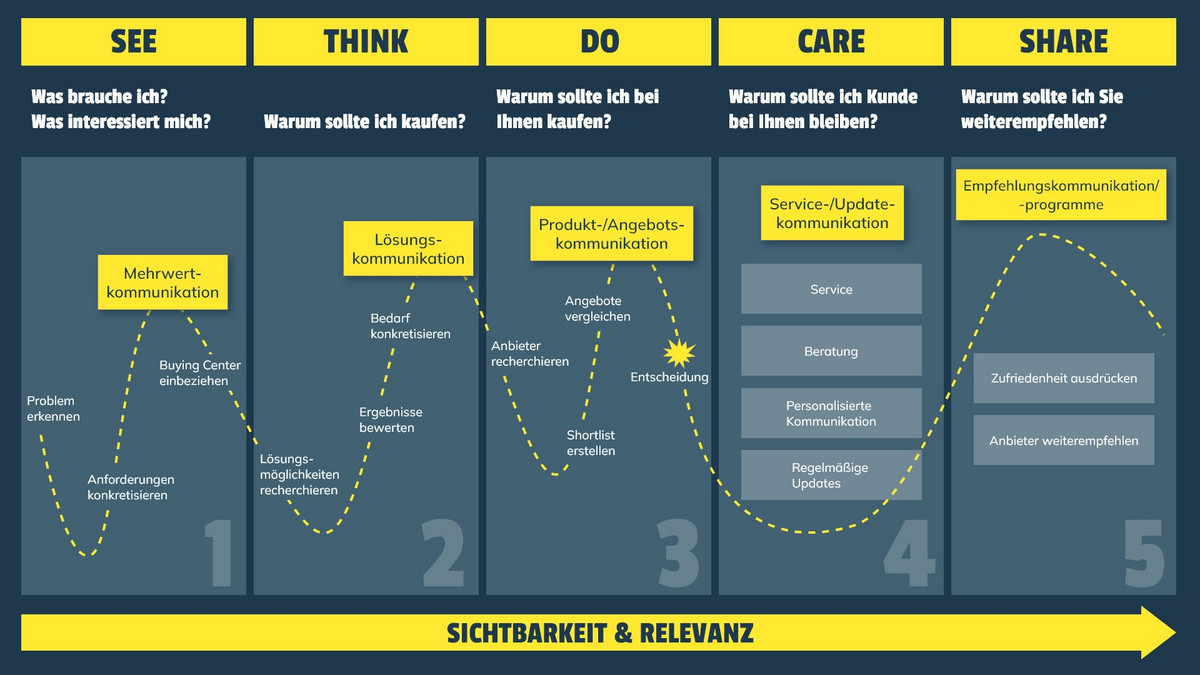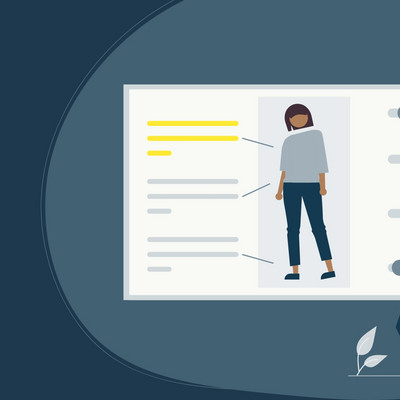Have you ever wondered how you can turn prospective customers into long-term customers of your company? The term customer journey describes exactly this path that customers take - from their first contact with your brand to a long-term customer relationship.
In this blog post, we provide you with an explanation of the customer journey phases and reveal how you can use the 5 phases of the customer journey to optimize your marketing and sales strategy and optimally support leads.
What is the customer journey?
The customer journey is the path that your leads take on the way to a customer relationship. It begins with the initial awareness of your company and extends to long-term customer loyalty beyond the purchase. We divide the customer journey into 5 phases. In each of these phases, companies have the opportunity to address leads or customers in a targeted manner.
The 5 phases of the customer journey
The 5-phase model of the customer journey is a proven framework for explaining and segmenting this process. Depending on which phase your leads are currently in, you can take different measures to bring them one step closer to their purchase decision.
In this phase, the lead recognizes for the first time that they have a problem or need something. They ask themselves the questions "What do I need?" or "What am I interested in?" and specify their requirements. At this point, potential customers should become aware of your brand, service or solution for the first time. The main points of contact here are activities on social media platforms, SEO measures and content marketing. Your goal in this phase is to attract attention. For example, if a lead searches for solutions to a problem and comes across one of your blog posts, you have already managed to bring your brand to their attention.
Now the lead has decided to tackle their problem and starts researching various possible solutions. Your goal in this phase is to clearly communicate how your solution will help the lead with their problem. Further content such as webinars, e-books, references or case studies are valuable for this, as they help the prospect to make informed decisions.
Now the decision is made - the lead has evaluated their options and is about to make a purchase. In this phase, potential customers compare different offers and providers. It is therefore crucial that your products or services are presented clearly and convincingly. You can support the decision-making process with free demos, trial versions or special offers.
The journey doesn't end after the purchase - this is where the customer loyalty phase begins. Your goal is to satisfy customers so much that they want to stay with you and possibly purchase additional products or services. Customer service, regular updates and personalized emails play a major role here.
Satisfied customers recommend your company to others - and that is the ultimate endorsement for your brand. In this final phase of the customer journey, you should try to turn customers into advocates. Calls for reviews, discount campaigns or referral programs help to create an incentive for recommendations.
Why are the phases of the customer journey important in marketing?
Understanding the customer journey phases is the key to an effective and targeted marketing strategy. Each phase requires a different approach and gives you the opportunity to pick up potential customers at the right time with the right content. Companies that align their strategy along the customer journey can tailor their marketing and sales activities precisely to the needs of their customers, leading to better results.
How to use the 5-phase model of the customer journey
Understanding the phases of the customer journey enables you to take targeted measures at each stage. Here are some tips on how you can apply this model in practice:
- Awareness:
Use value-added communication to attract the attention of potential customers. Use content marketing and offer informative content that addresses relevant problems. - Consideration:
This is about communicating solutions. So provide further information that clearly presents your solution or service. Case studies and comparisons can be valuable tools here. - Decision:
Now you can get more specific and move on to product or offer communication. This is where potential customers compare offers and different providers. Make their decision easier by offering free demos and advice to give them the final push to buy. - Retention:
Ensure that your customers are supported after the purchase with regular updates, good service and personalized communication. - Advocacy:
Encourage referrals through excellent service and referral programs. Ask your customers to provide you with quotes or motivate them to collaborate on references or case studies.
Conclusion
The 5 phases of the customer journey are the key to better understanding your customers and strategically planning your marketing. By consciously using the 5-phase model of the customer journey - from first contact to customer retention and beyond - you can positively influence the entire buying process and build long-term relationships with your customers.
If you want to learn more about how you can optimize your strategy along the customer journey, take the chance for a free consultation!






